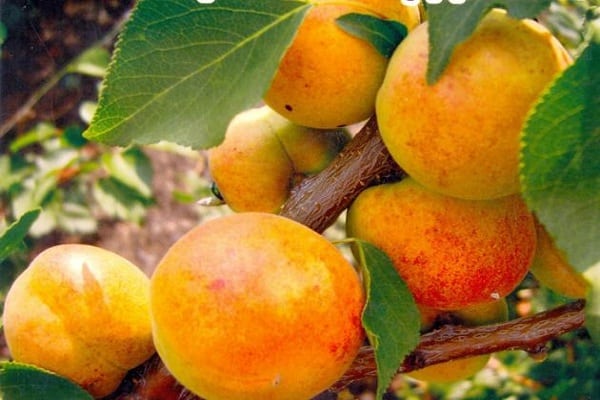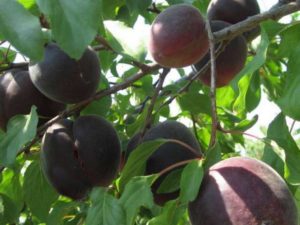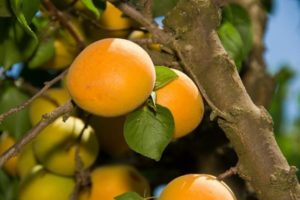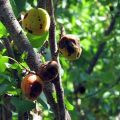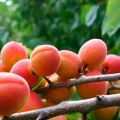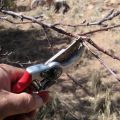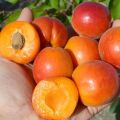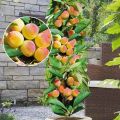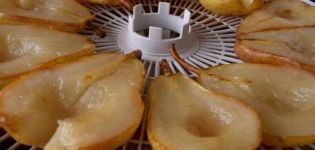Planting and caring for apricots in the Middle Strip, the best varieties and cultivation features
Apricot is a nutritious and valuable fruit for human health, so gardeners are trying to cultivate it in the Middle Strip. However, summer residents doubt whether to plant a whimsical seedling. Also, the question often arises of how to properly plant an apricot, and what care is needed in the Middle Lane?
Choosing a place for apricot
Before planting the plant, experts advise you to choose the area where the apricot will grow. She must:
- Be on a hillock.
- Knowingly to be warm.
- Solar.
- Windproof by constant cold winds.
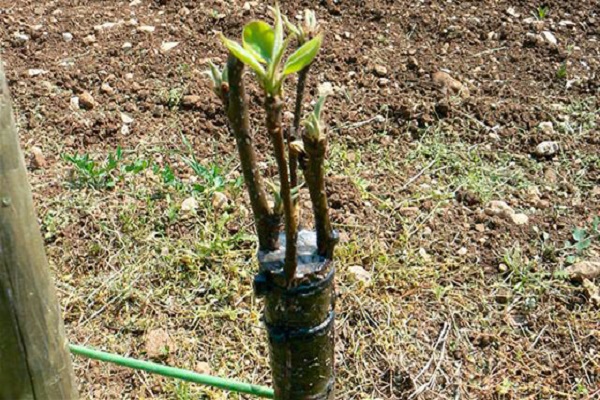
It is advised to plant on the south side of premises, fences or structures painted white - this is necessary for the reflection of the sun's rays in order to evenly warm the crown.
The soil at the planting site should be good for air permeability, that is, it should be drainage, as this is required by the root system during the development of the plant.
Important! Unacceptable temporary flooding or excessive moisture in the soil around the root system. Due to an excess of moisture, the plant dies.
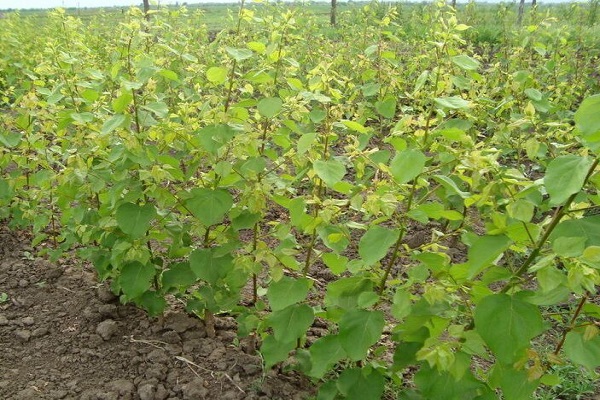
In virgin soil containing clay, you should add: peat and sand. And in sandy soil it is advised not to plant trees, as they decay and acquire burns, as a result of which they die and do not yield a crop. It is best to plant in soil with a neutral or slightly acidic reaction.
Saplings are required to be planted: 6 meters between rows and 4 meters in a row.
Planting apricots should be done in the spring. Plants are placed in pre-dug soil to a depth of 45 centimeters. A plant hole is dug before planting. Fall asleep 10 kilograms of humus and 1 kilogram of superphosphate.
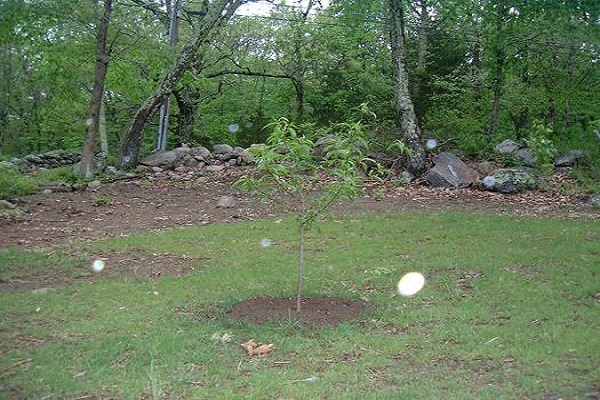
Best Apricot Varieties for the Middle Strip
Summer residents consider the Northern Triumph to be the best apricot variety - a tall self-pollinated tree with a spreading crown. Thanks to its good immunity, the plant is not affected by pests and various diseases. Tolerates any frost. It begins to bear the first fruits after three years, the harvest reaches 60 kilograms. The apricot is juicy, bright and colorful, large. Ripens from July to August.
Let's present a few more popular varieties:
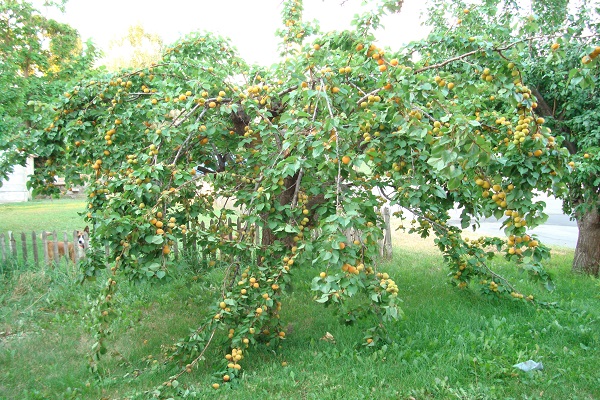
- The iceberg reaches a height of 3 meters, the crown is wide. Blooms profusely, but little ovary. The fruit weighs 20-25 grams, round, covered with yellow with orange fibers on top. Soft and delicate aftertaste. The ripening period occurs at the end of summer (last week of July - first week of August).
- Alyosha is a tall tree (can reach four meters). Its crown is lush, spreading. The inflorescences are large. Fruits weigh 15-20 grams, rounded, bright yellow with a blush. Delicious, small villi, the fruit looks shiny from a distance. The fruits ripen from the end of July to the first decade of August.
- Variety Aquarius, hybrid of the Lel variety.A large tree, reaching a height of 5 meters. Gives a great harvest. Fruit color is yellow with a slight blush. Astringent tastes. The bone leaves the pulp. Ripen in the second half of August.
- Royal apricot - begins to bear fruit after 4 years. Winter-hardy look. Fruits are small, oblong, bright orange in color. The pulp is nourishing, sweet and sour.
- The red-cheeked apricot is a self-fertile variety that is resistant to low temperatures, a tall tree. Bears fruit in 3 years. The size is over average, rich orange. Among the advantages is self-pollination.
- Snegirek is a low-growing plant, reaching a height of one and a half meters. The size of the fruit is average. Possesses excellent taste and juiciness.
- The Countess ripens in August. Brings enough harvest. It is required to thin out the fruits - if this is not done, they will be small. It grows up to 6 meters, the crown is round. Pollinated with the help of other plants. It is considered the most sensitive to frost. Fruit weight - up to 25 grams. The skin is pale yellow with a blush. The pulp is tasty, juicy, sweet. In dry weather, the apricot will feel good, and during a rainy summer it will suffer from diseases.
- Monastic - depending on the temperature, it ripens during August. The tree is tall, the crown is heavy and wide. High yield, fruit weighing 30 grams. The skin is covered with nap. Bright yellow with a reddish side.
- Favorite - fruit ripens late. The height of the tree is 4 meters. The harvest is large, weighing up to 30 grams, orange with a red barrel. The pulp is compacted, juicy, the stone is small, easily separated. Late ripening, in cool and rainy years, the crop does not have time to ripen.
For the Middle Volga region, you should choose frost-resistant plants, such as:
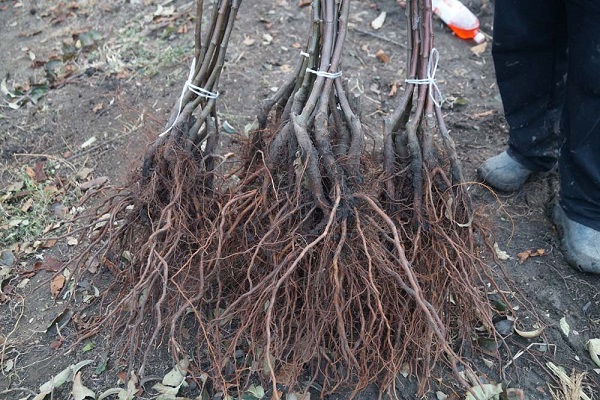
- Iceberg.
- Alyosha.
- Aquarius.
- Tsarsky.
- Lel.
Before planting, a fill mound should be made, and the pit is insulated with slate so that the roots do not freeze.
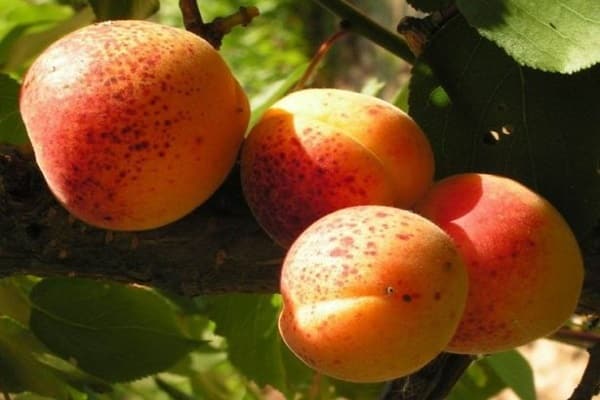
Planting and leaving
You must first choose a place that is isolated from drafts. It is desirable that the soil contains potassium trace elements. Spring is considered a favorable season for planting seedlings.
Before buying a tree, you need to decide which seedling is suitable for a given region, and how to care for it?
It is necessary to create drainage for air to enter the ground; you should also periodically loosen the soil around the plant.

Preparing for planting apricot begins in autumn, with the creation of a hole to plant in the spring. Drainage should be laid out at the bottom, then the soil is mixed with humus, salt containing potassium, lime and superphosphate.
Water the apricot in moderation. Excessive watering will lead to the death of the fruit plant. During the summer season - 4 times:
- In the middle of spring.
- In the second decade of May.
- 2-3 weeks before the fruit is fully ripe.
- In the fall, before preparing the tree for winter.
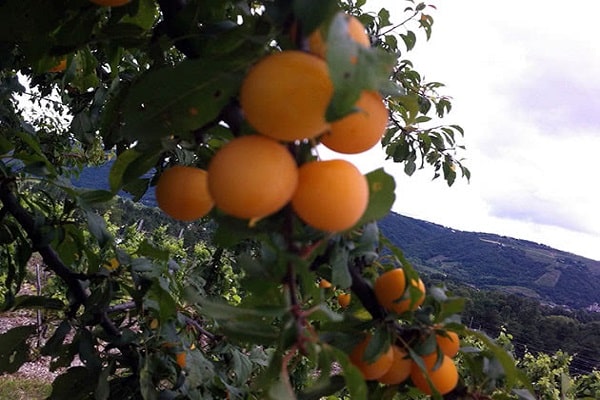
Trim the apricot follows annually. In early spring, branches frozen after winter are removed. Gardeners advise pruning the tree to stimulate the movement of sap, this helps to awaken dormant buds.
Summer pruning is required at the end of August. In the autumn, pruning of branches has a fruitful effect on the winter hardiness of the plant.
Fortified seedlings can withstand low temperatures. Before cold weather, wrap the trunk with sacking and sprinkle it around with soil. Younger seedlings should be given more attention. It is required to make a structure of wooden boards and stretch a film on them, sprinkle it with earth on top. Cover the crown with agrotextile in two layers.
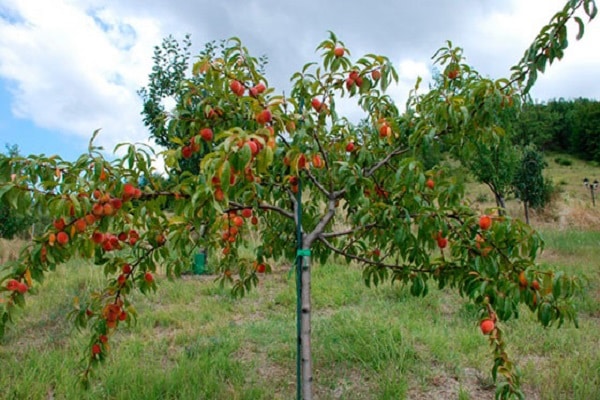
Within five years after planting the tree, it is required to fertilize the near-trunk zone. Next, increase the area for fertilization. In the spring, add up to 4 kilograms of humus, combining them with 6 grams of nitrogen and 5 grams of phosphorus, 8 grams of potassium. The resulting mixture is intended for 1 square meter.
Important! To increase the yield of apricot, it is required to regularly make mineral feed.
- In the second year of life, you need to fertilize with 0.06 kilograms of ammonium nitrate, 0.04 kilograms of potassium chloride and 0.13 kilograms of superphosphate.
- For 4 and 5 years - 0.1 kilogram of ammonium nitrate, 0.06 kilograms of potassium chloride, 0.2 kilograms of superphosphate.
- Subsequent years to make 0.37 kilograms of ammonium nitrate, 0.25 kilograms of potassium chloride and 0.88 kilograms of superphosphate.

How to add a seedling in the winter time:
- A trench with well-ventilated air flow is required.
- Lack of groundwater.
- A little moss and sawdust are spread on the bottom. You can also put coniferous needles.
- Should be spilled with water.
- After the first light frost, they sprinkle it with earth, forming a hill.
- You need to get the seedlings after the soil has warmed up sufficiently.
- Before placing the plants in the pit for storage, the leaves should be cut off, and the damaged roots should be cut off and put in water for a day.
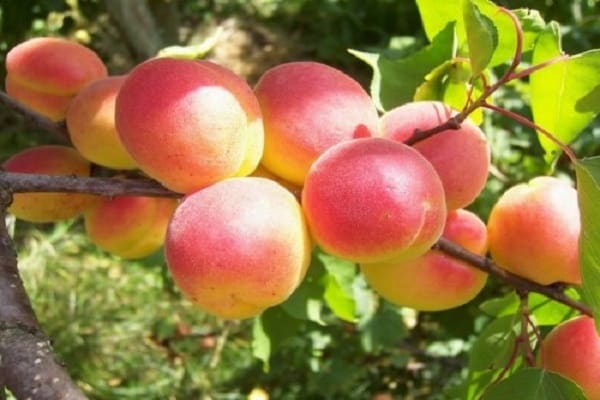
Apricot is a very capricious tree, but thanks to selection it can be grown in the Central Russia. The needs of the plant should be taken into account and a future variety should be selected that is suitable for the climate of the region in which it will grow.
